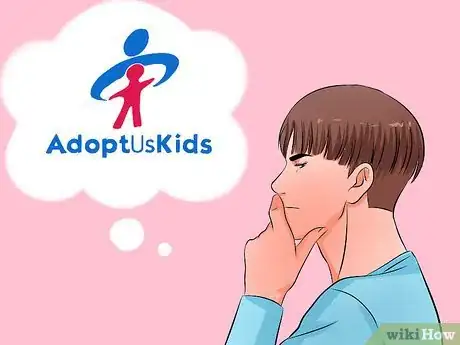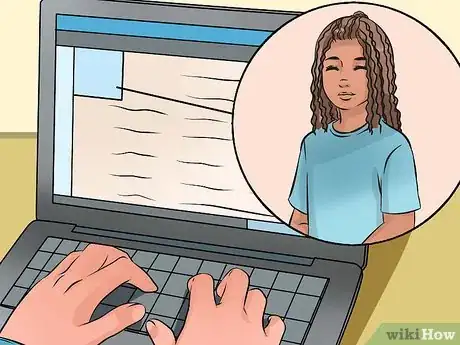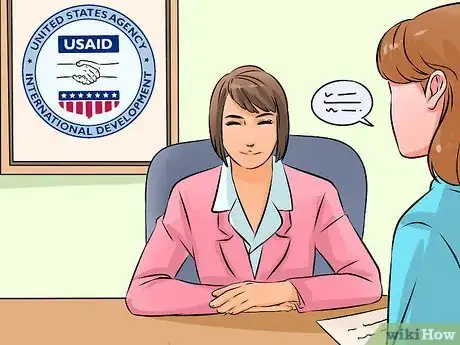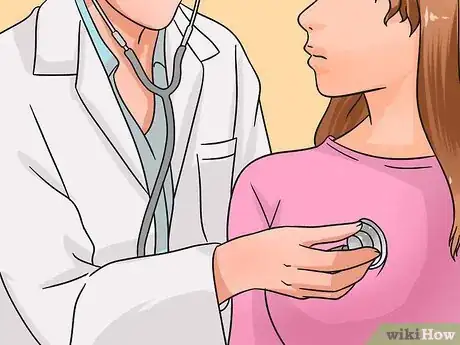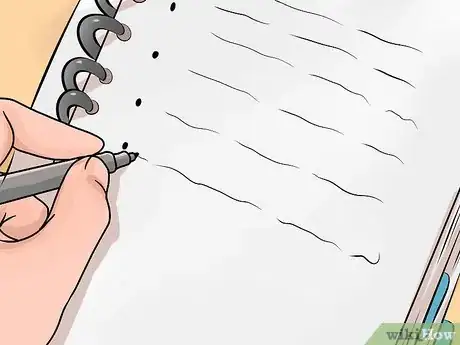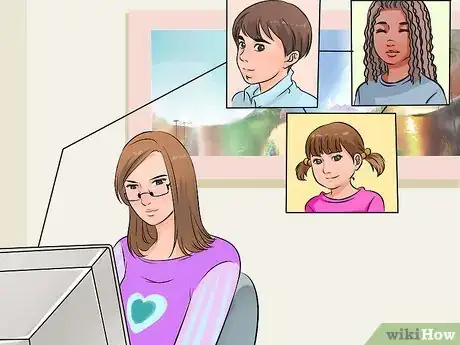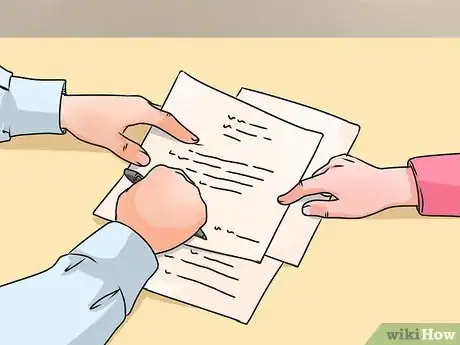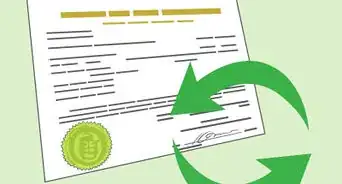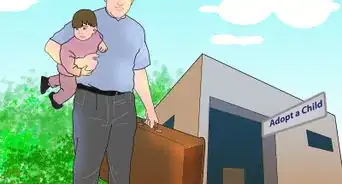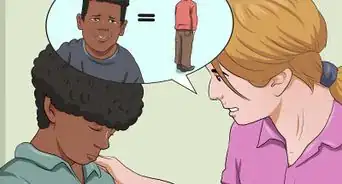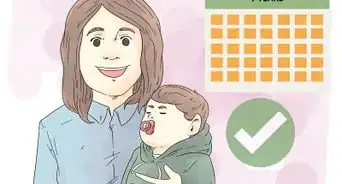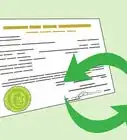This article was co-authored by Clinton M. Sandvick, JD, PhD. Clinton M. Sandvick worked as a civil litigator in California for over 7 years. He received his JD from the University of Wisconsin-Madison in 1998 and his PhD in American History from the University of Oregon in 2013.
There are 9 references cited in this article, which can be found at the bottom of the page.
This article has been viewed 51,377 times.
Adopting a child can be an incredibly rewarding experience for both you and the adoptive child. If you are considering expanding your family through adoption, understand that there are a number of options for you. In order to go through the adoption process, you will need to complete a home study, find a child, and finalize your adoption. Follow the directions in this article to get started.
Steps
Deciding to Adopt
-
1Think about why you want to adopt. Before you start the adoption process, you will need to think about whether adoption is right for you. Do you long to have a child in your home; do you want to raise a child as a part of your family; and do you want to help a child overcome the challenges that come with being adopted?[1] These are all questions you should be asking yourself prior to adopting a child.
- Openly and honestly discuss your thoughts with your family and your friends.[2] Get people's feedback and listen to what others have to say.
-
2Consider the cost of an adoption. Adopting a child is not necessarily as expensive as you may think.[3] While there may be some costs associated with your home study, visits with the child, and getting your home ready to welcome a new child, costs are usually subsidized through various programs.[4]
- For example, you could adopt a waiting child, which involves adopting a child who may be a little bit older and who has been waiting a while to get adopted, and therefore the costs are usually lower.[5] Also, employers will often help subsidize the cost of an adoption; you can usually get loans and grants to help with the costs; and you can even get tax credits for adopting a child.[6]
Advertisement -
3Understand if you are eligible to adopt. State laws will vary regarding who can adopt a child.[7] In general:
- Prospective parents are usually between the ages of 25 and 50;
- You do not have to own a home to adopt;
- You do not have to have a predetermined income level;
- Many states will allow gay and lesbian couples to adopt; and
- People with disabilities can adopt.[8]
-
4Know who you want to adopt. Before starting the process, think about what type of person you would like to adopt. Are you interested in an infant, a toddler, an older child, someone with special needs, an international child, or a foster child?[9]
- Also, if you have other children already, consider how they would feel bringing another person into the family.[10] If they are old enough, talk with them and get their input about these things as well.
Choosing An Adoption Path
-
1Think about an agency adoption. Domestic adoption agencies in the United States work with birth mothers to find adoptive parents.[11] When it comes to adopting from a domestic agency, there are generally two paths you can take.
- Open adoptions are the first option. This means that prospective parents meet and form a relationship with the birth mother (and sometimes the birth father), and often keep in touch after the baby is born.[12]
- Closed adoptions are the other option. In this type of adoption, the adoptive parents have no contact with the birth mother, and the baby has no contact with the birth mother after they are adopted.[13]
-
2Decide if you want an independent adoption. Some people prefer to work with an independent lawyer to adopt a child, rather than going through an agency. Prospective parents may alert people they know that they are hoping to adopt a child, or they may ask the lawyer to conduct a search for a birth mother. Either way, the lawyer ensures that the adoption is conducted legally.
- Adopting independently can give the adoptive parents greater control over the search process, rather than leaving it up to the agency to facilitate a match. The process of adopting independently is often faster than going through an agency.
- The downside of adopting independently is that it is common for birth mothers to change their minds late in the process. Agencies have a process in place to eliminate this as a risk factor; if you're working independently, make sure your lawyer is highly experienced with adoptions to minimize the chance that this will happen.
- Conducting your own search for a birth mother is not legal in every state. Make sure finding your own birth mother is legal where you live before pursuing this as an option.[14]
-
3Determine if a foster adoption is an option. Adopting a child who has been placed in foster care is another good option to consider. State agencies list the children available for adoption in online databases that usually include photographs and profiles. You can pursue this type of adoption by finding an agency in your area and contacting them for more information.
- Children in foster care are usually over one year old, and some are in their teens. Many have been waiting a long time for loving parents to bring them into their home. Some children in foster care have disabilities, illnesses, or other special needs that have caused them to have to wait longer to be adopted.
- In some cases, children were placed in foster care with their siblings, and they wish to be adopted together. This is something to consider if you're open to adopting more than one child.
-
4Consider an international adoption. Adopting a child from another country is a popular option among citizens of the United States. To pursue this route, work with a U.S. Agency that has ties with international agencies and can facilitate the process for you.
- International adoption can be a longer process than domestic adoption, since you have to meet the requirements of two countries instead of one. Conduct research on the adoption policies of different countries to find the one that makes sense for your family.
- International adoptions may be closed or open, depending on the country. Make sure you are aware of the birth mother's expectations and ties you'll have to the country after the adoption is complete.
Completing a Home Study
-
1Go to orientation. Many agencies will offer an informational session, which you can attend to learn about the home study process and why it is so important.[15] These orientations usually do not cost anything and do not carry with them any obligations.[16]
- Home studies are incredibly important as the report that is created will be your resume during the adoption process. This report will assess your ability to be an adoptive parent, and it will be disseminated to any interested children and their representatives.
-
2Complete training. The agency that conducts your home study will usually require you to go through training during the home study process.[17] During training, you will learn about the needs of children waiting for families, adoption issues, and adoption requirements.[18]
- Going through this training will often help you decide what type of child you could parent most effectively.[19]
-
3Take part in interviews. One or more social workers will conduct a series of interviews with you throughout the home study process.[20] These interviews will help you build a relationship with those people responsible for finding you the perfect child.[21]
- During the interviews, you will likely be asked about the following: your experiences with children; your important relationships; your approach to parenting; how you handle stress; stories of crisis or loss; and infertility issues.[22]
- The people conducting the interviews will also discuss: what age of child would fit best with you and your family; whether a sibling group would work well; and other important characteristics you are looking for in a child.[23]
-
4Allow a home visit. When professionals come in to your home, they are trying to ensure your home offers a safe environment for a child.[24] In addition, they need to make sure your home complies with any state licensing standards, which includes working smoke alarms, safe storage of firearms, safe water, and adequate space for each child.[25]
- During the home visit, the individual will need access to all areas of the home or apartment.[26] They will be looking at how you plan to accommodate a new child.[27] They will not be inspecting your housekeeping standards, although you should do your best to portray a comfortable, child-friendly environment.[28]
-
5Provide income statements. While you do not need to be rich to adopt, you will need to show that you can responsibly handle your finances.[29]
-
6Get health statements. You must get a physical exam and a statement from a physician that you are healthy, have a normal life expectancy, and are physically and mentally able to care for a child.[32]
-
7Complete a background check. In order to be approved for adoption, you must submit to a background check.[33] They will ask you to sign a consent form that allows them to look into your background.
-
8
-
9Submit references. The agency you are working with will ask you to submit the names, addresses, and phone numbers of three or four references.[39] References should be people who have known you for a long period of time, know how you act around children, and know about your home and professional life.[40]
Finding a Match
-
1Search for a child. Once your home study is complete, you can start looking for the perfect child to adopt.[41] Your search will take varying routes, depending on the adoption path you chose.
- If you went through an adoption agency, whether it is a domestic or international adoption, the adoption agency will have a list of children available.[42] You will sit down with your agency and go through the list to determine which children might be the best fit.
- If you are doing an independent adoption, you will work with your attorney (or another adoption professional you may have hired) to find a family looking to place their child up for adoption.[43] Your hired help will usually have a great network already built that they can tap into.[44]
- No matter what adoption path you chose, you can and should be an active member of the search.[45] Work with the people around you to find the best child for you and your family.
-
2Exchange information. After you have found a child you think would be a good fit, you will have to exchange certain information with that child, their agency, and/or their family.[46] The most important document you will exchange will be your home study.[47] The child's representatives will look through your home study in order to determine if the child would be a good fit. The child's representatives may also send the child's profile to you.[48]
- This process may take time and there may be a number exchanges.[49] You should feel comfortable at this stage asking questions and requesting as much information as you think you need.
-
3Get selected. When the exchange of information is over, the child's representatives will make and inform you of their decision.[50] Keep in mind that you may not be the only person considering adopting this child.[51]
- If you are not selected, simply go back to searching for another child. While it may be heartbreaking at first, understand that things happen for a reason and there is always another child out there waiting for you.
- If you are selected, you will have an opportunity to visit with the child before finalizing the adoption.
-
4Visit with the child. Once selected, you will take part in a series of visits with the child.[52] During these visits you will have the opportunity to talk with the child and their representatives about almost anything. You should take this time to get to know the child and make sure they are the perfect addition to your family.
Finalizing Your Adoption
-
1Comply with any legal requirements. After you have found a child that matches with you and your family, you will need to comply with a number of legal requirements in order to effectuate the adoption. The types of legal hoops you have to jump through will vary depending on your state's laws and the adoption path you chose. The following legal hurdles are the most universally applicable to all types of adoptions:
- The first major legal hurdle involves the termination of parental rights.[53] When parental rights are terminated, a judge permanently ends all legal parental rights of the birth parents to the child.[54] This must occur before an adoption can be finalized.[55] This process may be either voluntary or involuntary, and the length of this process varies from state to state.[56]
- The other major legal hurdle is the adoption consent procedure. Depending on what path you chose for adoption, this may take the form of a document signed by the birth parents; a document issued by the adoption agency; or a document signed by the child themselves.[57] When this procedure is completed, the adoption can be finalized.
-
2Go to court. When you are ready to finalize the adoption, you will attend a court hearing where the judge will sign off on the adoption.[58] The judge will look through all of your legal documents and ensure you have completed everything you need to. Once the judge signs off on the adoption, you will be the legal parent of your new child.
-
3
References
- ↑ http://adoption.com/how-to-adopt-a-child-guide
- ↑ http://adoption.com/how-to-adopt-a-child-guide
- ↑ http://www.adopt.org/financing-adoption
- ↑ http://www.adopt.org/financing-adoption
- ↑ http://www.adopt.org/financing-adoption
- ↑ http://www.adopt.org/financing-adoption
- ↑ http://www.adopt.org/who-can-adopt
- ↑ http://www.adopt.org/who-can-adopt
- ↑ http://adoption.com/how-to-adopt-a-child-guide
- ↑ http://adoption.com/how-to-adopt-a-child-guide
- ↑ http://www.americanadoptions.com/
- ↑ http://www.adopt.org/types-adoptions
- ↑ http://www.adopt.org/types-adoptions
- ↑ http://www.babycenter.com/0_adopting-smart-how-it-works-and-how-much-it-costs_1373536.bc
- ↑ https://www.childwelfare.gov/pubpdfs/f_homstu.pdf
- ↑ https://www.childwelfare.gov/pubpdfs/f_homstu.pdf
- ↑ https://www.childwelfare.gov/pubpdfs/f_homstu.pdf
- ↑ https://www.childwelfare.gov/pubpdfs/f_homstu.pdf
- ↑ https://www.childwelfare.gov/pubpdfs/f_homstu.pdf
- ↑ https://www.childwelfare.gov/pubpdfs/f_homstu.pdf
- ↑ https://www.childwelfare.gov/pubpdfs/f_homstu.pdf
- ↑ https://www.childwelfare.gov/pubpdfs/f_homstu.pdf
- ↑ https://www.childwelfare.gov/pubpdfs/f_homstu.pdf
- ↑ https://www.childwelfare.gov/pubpdfs/f_homstu.pdf
- ↑ https://www.childwelfare.gov/pubpdfs/f_homstu.pdf
- ↑ https://www.childwelfare.gov/pubpdfs/f_homstu.pdf
- ↑ https://www.childwelfare.gov/pubpdfs/f_homstu.pdf
- ↑ https://www.childwelfare.gov/pubpdfs/f_homstu.pdf
- ↑ https://www.childwelfare.gov/pubpdfs/f_homstu.pdf
- ↑ https://www.childwelfare.gov/pubpdfs/f_homstu.pdf
- ↑ https://www.childwelfare.gov/pubpdfs/f_homstu.pdf
- ↑ https://www.childwelfare.gov/pubpdfs/f_homstu.pdf
- ↑ https://www.childwelfare.gov/pubpdfs/f_homstu.pdf
- ↑ https://www.childwelfare.gov/pubpdfs/f_homstu.pdf
- ↑ https://www.childwelfare.gov/pubpdfs/f_homstu.pdf
- ↑ https://www.childwelfare.gov/pubpdfs/f_homstu.pdf
- ↑ https://www.childwelfare.gov/pubpdfs/f_homstu.pdf
- ↑ https://www.childwelfare.gov/pubpdfs/f_homstu.pdf
- ↑ https://www.childwelfare.gov/pubpdfs/f_homstu.pdf
- ↑ https://www.childwelfare.gov/pubpdfs/f_homstu.pdf
- ↑ http://www.adopt.org/ten-step-overview
- ↑ http://www.adopt.org/ten-step-overview
- ↑ http://www.adopt.org/ten-step-overview
- ↑ http://www.adopt.org/ten-step-overview
- ↑ http://www.adopt.org/ten-step-overview
- ↑ http://www.adopt.org/ten-step-overview
- ↑ http://www.adopt.org/ten-step-overview
- ↑ http://www.adopt.org/ten-step-overview
- ↑ http://www.adopt.org/ten-step-overview
- ↑ http://www.adopt.org/ten-step-overview
- ↑ http://www.adopt.org/ten-step-overview
- ↑ http://www.adopt.org/ten-step-overview
- ↑ http://www.adopt.org/adoption-laws
- ↑ http://www.adopt.org/adoption-laws
- ↑ http://www.adopt.org/adoption-laws
- ↑ http://www.adopt.org/adoption-laws
- ↑ http://www.adopt.org/adoption-laws
- ↑ http://www.adopt.org/ten-step-overview
- ↑ http://www.adopt.org/adoption-laws
- ↑ http://www.adopt.org/adoption-laws
